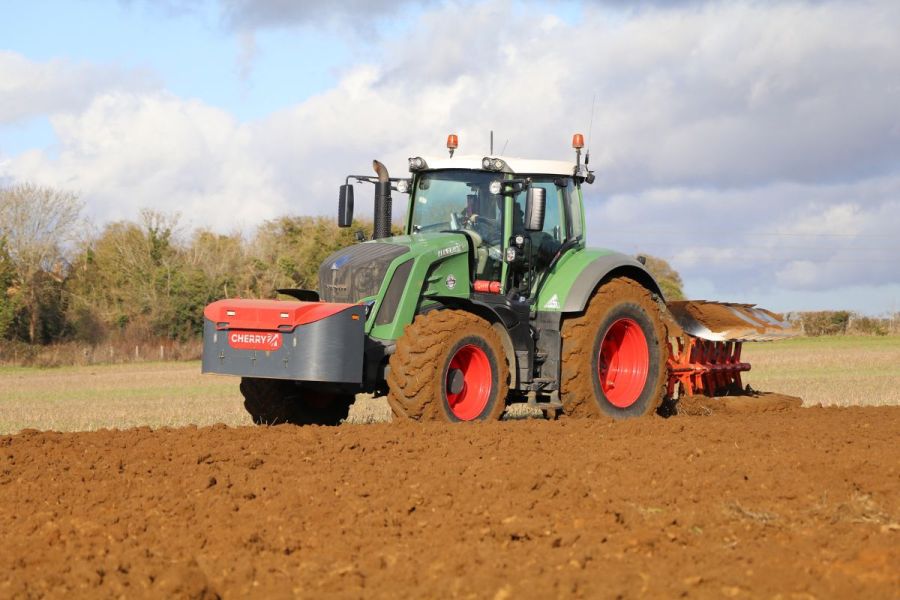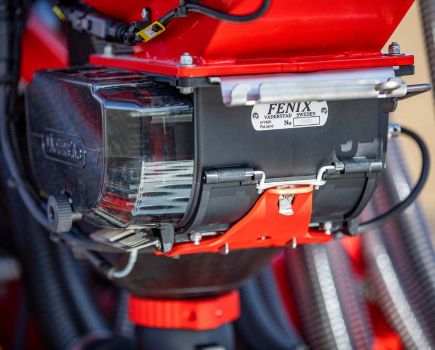Spending valuable hours toiling away to complete administrative paperwork is the ultimate thief of time for many farmers but adopting communicative technology has reduced the in-tray for one Oxfordshire grower and machinery running costs for another in Lincolnshire. CPM learns more.
By Rob Jones
Ditching his paper-based job system has allowed James Price to considerably increase his work efficiencies by wirelessly transferring work data to and from his machines when working across his 800ha of combinable crops.
Farming at Woodstock in Oxfordshire, James adopted Fendt’s offboard system after looking at new ways to maximise the technology in his modern machinery fleet and minimise the time he spends entering data into a computer.
“Before FendtOne, we were a paper-based system, which meant inputting the specific job and details onto the computer and then printing it off for the operator to manually fill out in the field. Once the job had been completed by the operator, I’d then manually put the data back onto the computer so we kept an up-to-date record of works,” he says.

Ditching a paper-based job system has allowed James Price to considerably increase his work efficiencies.
Historically, James’ paper-based system worked sufficiently, but with a small workforce of two full time employees and additional students at harvest time, keeping track and then processing exact job records was reducing efficiencies. Streamlining the recording process within his Fendt fleet was starting to become essential.
“We adopted the offboard technology in 2020 to streamline this process and keep paper records to a minimum. Since then, I’ve become much more in control of my business, it has allowed me the flexibility to keep track of jobs from wherever I am and doesn’t require me to be sat down at a desk to do so,” he explains.
“My role in the business has changed a lot over the years. I used to drive the tractors and the combine but I’m now more focussed on the management side of things and only really get to operate the forklift and the sprayer.
“It’s now easier for the guys on the machines as there’s no necessity to meet up in the morning to exchange pieces of paper and then keep hold of these once the jobs have been completed.”
Fendt’s offboard technology is the remote part of the FendtOne operating system and offers farmers and operators a new way of job management though the Task Doc interface. Job-specific information is added to a task which is then sent wirelessly to the machine. The operator completes this in the field before sending it seamlessly back to the office.
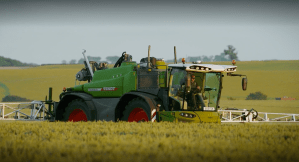
During busy spring and summer periods, sending jobs directly to machines can save downtime.
Jobs can be created from multiple devices and then sent to a machine. Information such as field location, machinery, and products required can all be added to the task. James says the detail which he can put onto a job sheet really helps with keeping accurate records.
“We can add in addresses for farms and fields, specific product requirements and quantities for jobs – such as spraying or drilling – along with operators and machines. The tractor then automatically records when the job was carried out, so we have an exact start and finish time, measurements of the product quantities applied – even down to details on the weather.
“For any contracting jobs we carry out, this makes invoicing simple as we have an exact job record, including the fuel use of the tractor or machine, so there are no grey areas regarding how long a job has taken,” comments James.
Fendt’s Task Doc uses machine parameters and position data. This location-specific information is recorded every five metres and is the basis for allowing variable rate application to increase accuracy, which should save on seed, plant protection products and fertilisers.
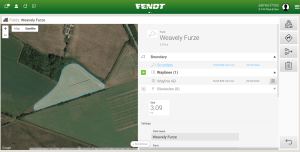
Waylines are saved to FendtONE and then shared between different machines and operators.
As well as ISO-XML files, Task Doc can also process Shape files that are transferred onto the system via a USB. Another useful feature is that field waylines are stored in the field files. So when an operator clicks on a field, the previous waylines are visible, along with date and machine details.
Changing to a completely paperless system not only requires the correct technology but also the application to make it work. The way the data is now handled is the biggest advantage over the old system, says James.
“Before offboard, we’d lose job sheets or find paper that had been drawn on or incomplete records. Now, the data for each job is always on the screen which helps when operators are asked to do a job for the first time. The machine seamlessly recognises the field it’s in and brings up the task, so application is always correct, and it’s wirelessly transferred back to the office once complete.”
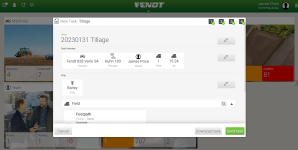
Creating a new job in the Fendt desktop system requires no printed paperwork.
Further integration with different machines means additional data can be recorded, such as variable seed and fertiliser rates and maps showing the differing areas. Data on fuel and AdBlue used, along with start and finish times, are shown on the records, while working time is broken down into effective and ineffective hours, which could help users cut idling tractor times, according to Fendt.
Another big benefit for James has been the ability to monitor machines and employees when they are lone working for long periods, which from a management perspective has been a great asset and helps when providing support to the field.
“I don’t want to be hassling my guys just to find out when they will be finished or if they’ll require diesel before the end of the day. I can now see all this information on my screen which details exact fluid levels and how much of the field or job is left. This then allows me to gauge when they might require assistance and where the best place to meet them is.”
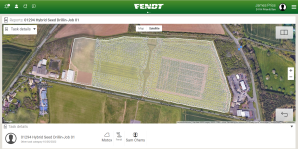
Accurate field recording data of works can be shared with customers when invoicing.
The system has improved the data handling, he says. “With the ability to send jobs remotely to my operators means the farm is becoming more streamlined and every tractor hour is accounted for.
“At busy periods in the spring and summer, it’s much easier to check on a screen where a machine is without being a distraction for the operator. The offboard technology has allowed me to control my business easier from a task and location point of view. I also don’t have to be in my office to do it as it can be accessed from my phone at home, so having the flexibility to operate like that has made my life 100 times easier,” concludes James.
This article was taken from the latest issue of CPM. Read the article in full here.
For more articles like this, subscribe here.
Sign up for Crop Production Magazine’s FREE e-newsletter here.

